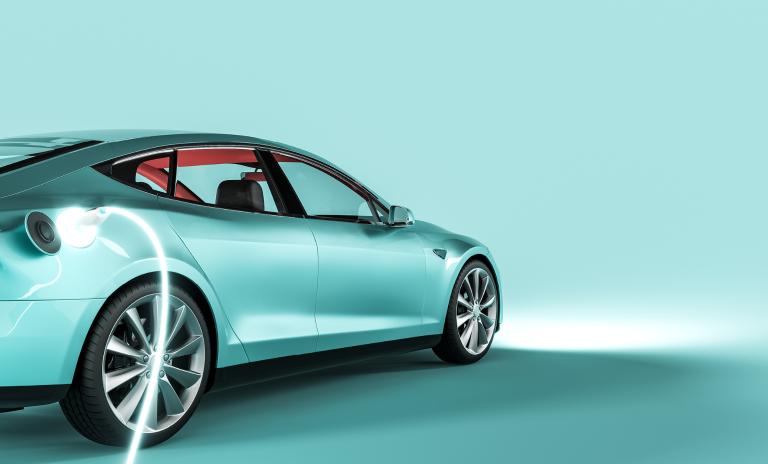



最新のローランド・ベルガーのEV(電気自動車)充電指数によると、急速な拡大期を終えた2023 年は、一部の地域で EV販売とインフラ成長に鈍化が見られ、グローバルEV市場において地域によるまだら模様が明らかになりました。一方で、EV充電市場は、自動車メーカー(Original Equipment Manufacturer、以下OEM)の参画により、活発化しています。EV充電インフラ開発は依然として自動車販売ほど進んでいないものの、ほぼすべての市場で急速 DC(直流) 充電装置が増加し、消費者にも公共のEV充電機能の改善が認知されています。

EV業界は現在、エネルギーコストの高騰、インフレ、補助金の削減など、多くの逆風に直面しています。一部の政府では、助成先を自動車本体から充電インフラに移しています。2023年も世界のEV販売普及率は上昇を続けましたが、政策、供給、需要の要因の影響を受けて、国によって大きなばらつきがありました。最も大きな上昇が見られたのはアジア諸国と中東地域となり、韓国とドイツでは販売普及率が低下しました。
インフラ整備にばらつきがあるため、EV販売数に対する充電インフラ整備は十分ではありません。しかし、DC充電器の設置が増えるにつれて、消費者の満足度は全体的に向上しました。
では、ローランド・ベルガーのEV充電指数ランキングを読み解く上で、これらの概況は何を意味するのでしょうか。
中国は依然としてランキングのトップに位置しています。競合国であるドイツ、米国、オランダはいずれも、スコアが停滞または低下しています。これは、2023年のほとんどの既存市場で見られる傾向です。一方、中東地域と東南アジア地域の発展途上市場では、EV販売が急速に伸びており、主要国との差を縮めています。
EV充電指数の第5版は、ヨーロッパ、中国、アメリカ、中東、アジア(その他)の5つの地域の32都市と31の指標をカバーしています。これは、業界インタビュー、一次調査、および2024年第2四半期に実施された15,800人以上の参加者を対象とした調査に基づいています。この中で、私たちは包括的な調査結果を示すと共に、EV普及、政策、充電インフラ、市場動向という4つの主要分野に焦点を当てています。EV 充電指数スコアは 0 から 100 の範囲で評価され、ネットワークの充足度や顧客満足度など、これらの分野における国の充電施設の準備状況を表しています。
要約は下記よりご覧ください。
レポート全文(英語のみ)は、
こちら
よりダウンロードできます。それぞれの市場について、
現地の専門家による洞察
もご覧いただけます。
注釈: 本調査のスコアとランキング算出方法は、2025年の第6版で改訂されています。
一部の発展途上市場ではEV販売の成長率が最も高かった一方、中国は2023年に36%の販売普及率で目覚ましい進歩を続けました。より多くの中国OEMによる新モデルの発売に伴い、価格競争はますます激しくなっています。
中国に比べると、他の既存市場の市況は良くありませんでした。西ヨーロッパでは、ドイツやオランダなどの一部の成熟市場で補助金が削減または廃止され、EVの成長ペースが鈍化しています。米国では、プラグインハイブリッド車(PHEV)の人気が高まっており、2023年には米国の販売台数の20%を占める見込みです。これは、公共の充電インフラに対する疑心が続いていることを反映しており、西ヨーロッパの消費者も同じ考えです。
ローランド・ベルガーの本調査によると、世界全体でインフラ整備にはばらつきがあることがわかりました。たとえば、中国における充電拠点の伸びはEV販売の目覚ましい進歩と足並みを揃えていますが、米国では2023年に公共の充電拠点の成長が鈍化しました。充電拠点の整備の重要性は理解されているものの、急速に発展している中東市場を除くすべての地域で、車両対充電器の比率は停滞、またはわずかに低下しました。
一方、改善が見られるのは急速充電です。公共の充電インフラにおけるDC充電器の比率はすべての地域で増加し、調査時点で、全世界の公共充電器のほぼ4分の1がDCとなりました。
充電市場について、投資家は色々な見方をしている一方で、市場はダイナミックさを増しています。中国企業は、技術力とコスト効率の優位性を強みに、特にヨーロッパでグローバルな展開を拡大しています。ヨーロッパと米国では、公共事業会社や小売チェーンなど、隣接するバリューチェーンからの新しい市場参加者が登場しています。
OEMはまだほとんどの市場で主要なプレーヤーではありませんが、インフラの拡大がEV販売に繋がる分野での参画が活発化しています。ローランド・ベルガーの調査によると、OEM独自の充電ネットワークは、特に中国、インド、中東において、EV購入時の重要な要素となっています。
市場参加者は、新しいビジネスモデルと技術を試し続けている段階です。多様な場面で利用可能な万能なソリューションはまだ登場しておらず、市場がどこに着地するかについても、まだ明確な方向性はありません。グローバル市場のEV充電指数ランキング、EV販売、e-モビリティ政策、充電インフラ、EV充電市場に関する最新の動向は、本レポート「EV充電指数2024:EV市場の成長は鈍化、焦点はインフラ」をダウンロードしてご覧ください。
Register now to get the full study and discover the latest insights, emerging trends, and upcoming obstacles in the EV and EV charging markets in different regions.